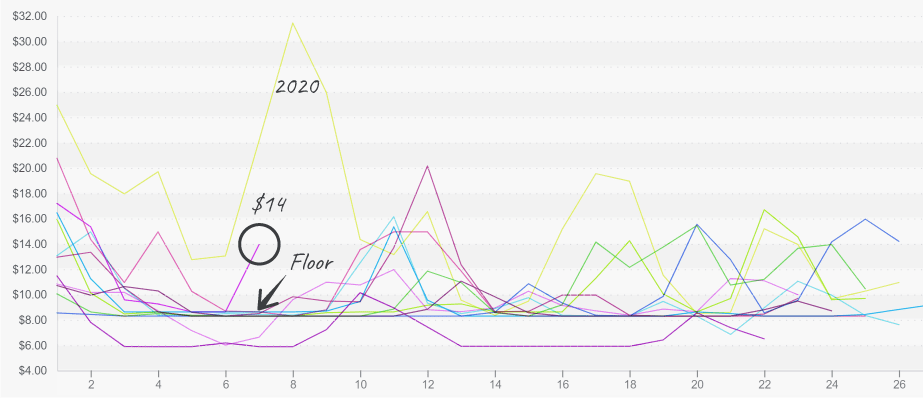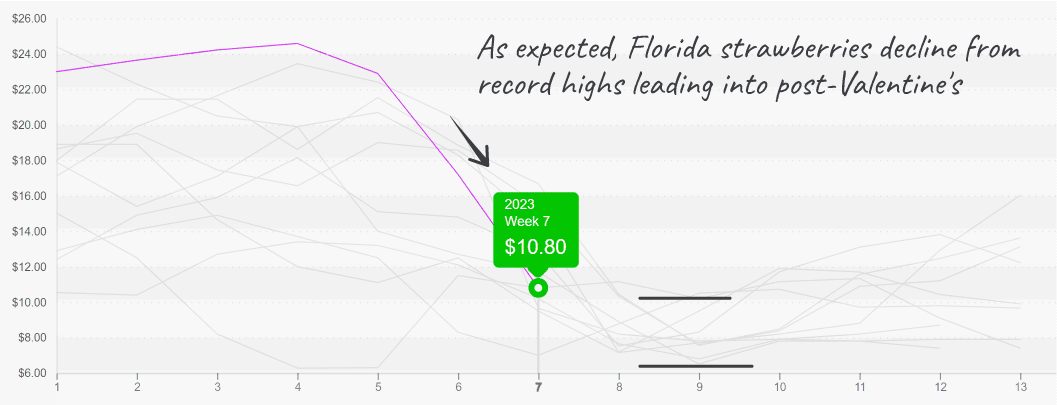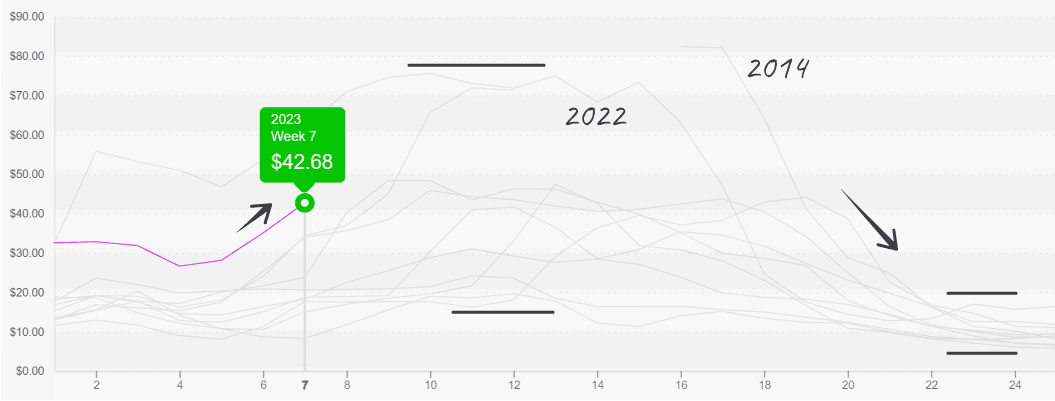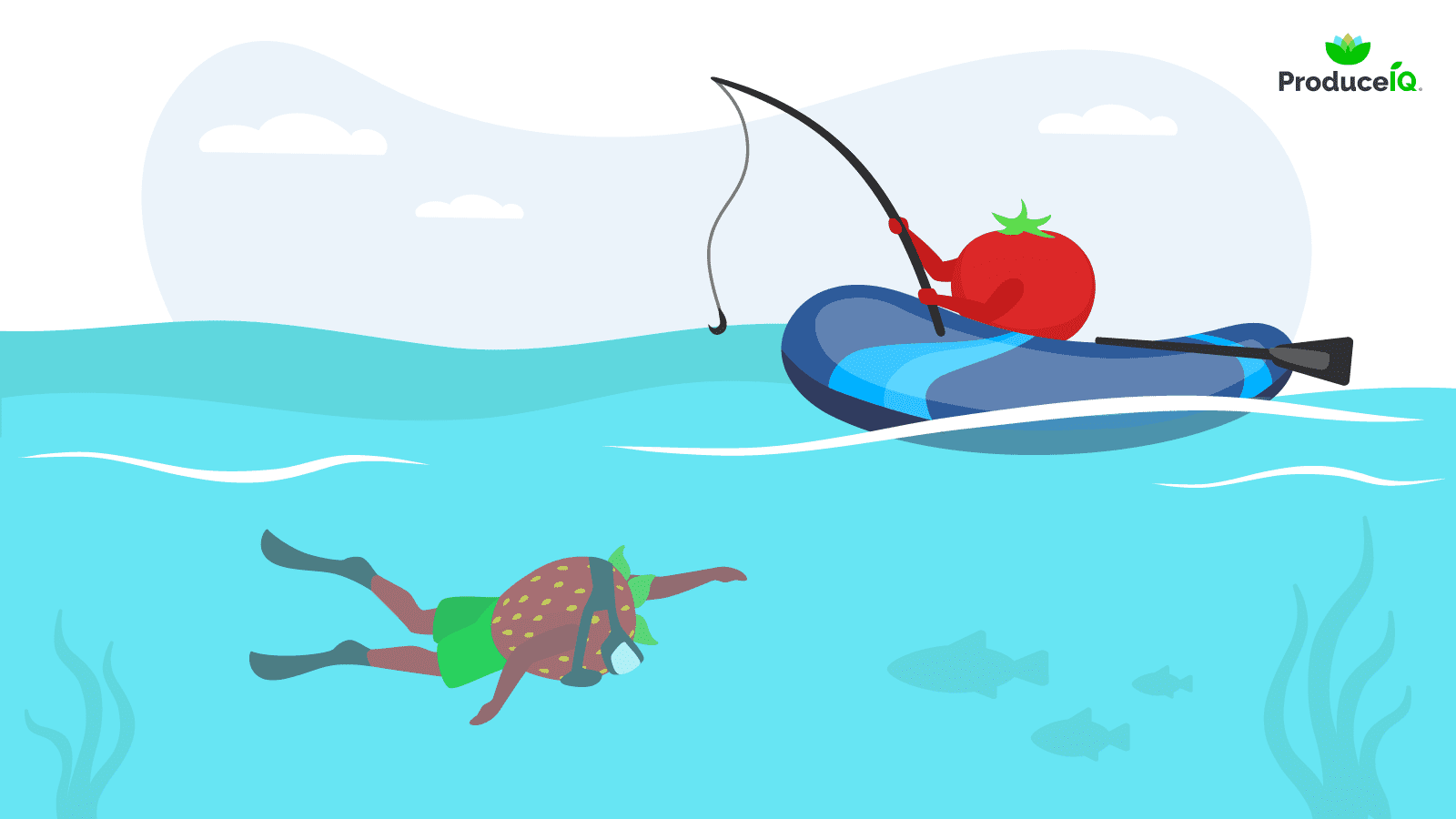Cold, ice, and snow will spread steadily from the West Coast to the East Coast throughout the week. Growing regions in the Southeast will be protected from the cold snap, but some growing areas in the Southwest may experience ice and unseasonably cold temperatures.
Strong demand and cool weather are tightening tomato supply on both coasts and upping prices. As a result, tomato prices, most notably Roma tomato prices, increased significantly over the previous week. Roma prices are up +45 percent.
In addition, niche-type tomatoes such as heirlooms and Campari are also in short supply. Supply should even out, and prices steady, within the then couple weeks as Mexico ramps up production and Florida’s supply recovers.
ProduceIQ Index: $1.05/pound, down -7. 9 percent over prior week
Week #7, ending February 17th
Blue Book has teamed with ProduceIQ BB #:368175 to bring the ProduceIQ Index to its readers. The index provides a produce industry price benchmark using 40 top commodities to provide data for decision making.
Roma Tomato prices rise in Nogales, yet not close to the anomaly of 2020


Tomatoes aren’t the only Florida commodity still thawing out. Due to a severe gap in supply, sweet corn prices are at a ten-year high. At $32, prices are doing little to assuage anxious consumers’ fears of inflation. Prices are forecasted to stay elevated until Florida’s Spring production begins in March.
Thanks largely to strawberry markets, overall grapes and berries category prices are diving, dragging the rest of the index with them. Strawberries are down -35 percent over the previous week. Mexican strawberry volume is declining; however, supply out of California, and Florida is increasing. As a result, expect prices to continue their descent through March.
Strawberry prices (Florida) crash as holiday demand passes and supply increases


No post-game hangover for Hass Avocado markets this year. Prices are up +9 percent over the previous week due to reduced supply. Before the Super Bowl, growers in Michoacan and Jalisco eased up harvests to compensate for the earlier weeks of high volume.
Week #7 typically marks the beginning of higher avocado prices. Markets may decrease slightly over the next two weeks as growers ease the bottleneck, but they could also follow typical patterns for this time of year and continue their upward trajectory.
Like Hass Avocado markets, lime prices are sticking closely to seasonal trends. Average prices are up +23 percent over the previous week. The old crop in Southern Mexico is nearly finished, and the winter crop has yet to begin. Characteristic of seasonal trends, prices will likely lean higher through March.
Lime prices enter season of volatility; at $43 now, last year’s prices continued past $70


Please visit Stores to learn more about our qualified group of suppliers, and our online marketplace, here.
ProduceIQ Index
The ProduceIQ Index is the fresh produce industry’s only shipping point price index. It represents the industry-wide price per pound at the location of packing for domestic produce, and at the port of U.S. entry for imported produce.
ProduceIQ uses 40 top commodities to represent the industry. The Index weights each commodity dynamically, by season, as a function of the weekly 5-year rolling average Sales. Sales are calculated using the USDA’s Agricultural Marketing Service for movement and price data. The Index serves as a fair benchmark for industry price performance.



